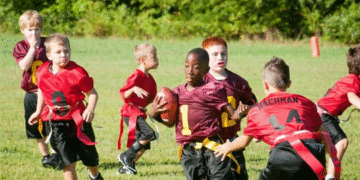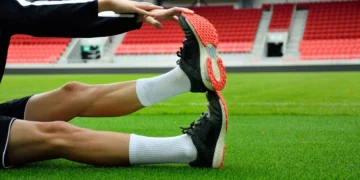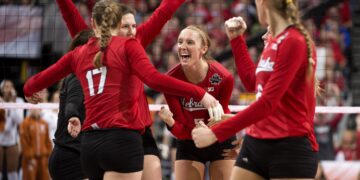Decoding Eligibility: Paving Your Path to College Sports
For student-athletes aiming to participate in college-level athletics and potentially earn scholarships, understanding eligibility criteria is essential. These standards help ensure fairness, academic preparedness, and athletic integrity. As governing bodies adapt policies, it’s more important than ever for aspiring athletes to clearly grasp the steps needed to stay on track. Eligibility is not just about athletic talent—it also encompasses academic performance, ethical conduct, and compliance with evolving regulations.
Academic Foundations: Meeting Core Requirements
Academic performance forms the backbone of athletic eligibility. Student-athletes must complete a specific number of core high school courses across key subjects such as math, science, and language. Simply being a talented athlete is not enough; consistent effort in the classroom is equally important. Maintaining a strong GPA across these core areas is required to demonstrate academic readiness and ensure a smooth transition into collegiate studies. Admissions committees and athletic departments alike place value on academic achievements as part of a holistic evaluation process.
Standardized Assessments and Maintaining Amateur Status
In addition to course performance, many colleges consider standardized assessments as part of the eligibility process. These scores help provide a broader measure of academic capabilities. However, athletic eligibility is also closely tied to maintaining amateur status. This means avoiding actions or engagements that might be viewed as professional activity, such as accepting payment for athletic performance. By focusing on personal growth, academic integrity, and fair play, student-athletes uphold the values expected at the collegiate level and protect their opportunities to compete.
Understanding Division Differences and Recent Changes
Eligibility standards can differ across collegiate athletic divisions, with varying expectations in terms of coursework, GPA, and recruitment processes. These differences reflect the structure, resources, and competitive environment of each division. Additionally, ongoing changes in policies related to athletes’ personal branding, such as name, image, and likeness (NIL) rights, have introduced new considerations for athletes and their families. Staying informed about these updates—and seeking guidance from coaches, counselors, or athletic associations—ensures that student-athletes make choices aligned with both short-term goals and long-term success.
Mastering the Scouting Game: Strategies to Shine
Success in earning an athletic scholarship goes beyond natural talent—it’s about how effectively you market your skills, present yourself, and align with the expectations of college recruiters.
Leveraging the Digital Realm in Scouting
In today’s tech-driven recruitment world, your digital footprint is as crucial as your on-field performance. AI-enhanced scouting platforms now assist coaches in evaluating athletes based on technical metrics and performance consistency. To stand out, student-athletes must ensure their game footage is professionally presented, regularly updated, and highlights not just skill but decision-making and sportsmanship. Maintaining a clean and engaging online presence—whether on sports platforms or social media—can further enhance visibility and credibility.
Proactive Engagement: Taking the Initiative
Waiting to be discovered is no longer a reliable strategy. Aspiring athletes need to actively participate in exposure events like tryouts, evaluation camps, and skill showcases. More importantly, direct communication with college coaches—through emails, calls, or even campus visits—can demonstrate initiative and passion. A well-crafted highlight reel that clearly displays your strengths and versatility is a must-have tool in your recruitment toolkit.
The Significance of Academic Performance
Your academic record plays a pivotal role in the scholarship process. A high GPA and strong standardized test scores not only ensure eligibility but also demonstrate your commitment and discipline, qualities highly valued by college programs.
Adapting to the Evolving Recruitment Landscape
The recruitment process is increasingly data-driven. Embrace these changes by focusing on both your athletic and academic achievements. By proactively engaging with coaches and leveraging digital platforms, you can significantly enhance your prospects of securing an athletic scholarship.
Crafting Your Visual Narrative: The Art of the Highlight Video
In the competitive arena of athletic scholarships, a compelling highlight video is your opportunity to make a lasting impression. Consider it a dynamic, visual resume that captures your skills and athleticism, making a strong first impression on college recruiters.
The Digital-First Impression: Making It Count
Recruiters increasingly rely on highlight videos as a primary evaluation tool. These videos often serve as a coach’s initial introduction to an athlete, emphasizing the need for a well-crafted presentation. The focus is on showcasing your abilities effectively in a concise format.
Essential Elements of an Effective Highlight Video
A standout video should be concise, typically one to two minutes, and prioritize your best moments. Tailor the content to the specific sport and the intended recruiting audience to maximize its impact. Clarity and evidence of good sportsmanship are also crucial.
Navigating the Recruitment Timeline: Staying on Track
Understanding the recruitment timelines is crucial for student-athletes aiming for athletic scholarships. These timelines dictate when you can officially commit, so staying informed is key to maximizing your opportunities.
Key Dates and Deadlines: Marking Your Calendar
For many Division I and II sports, National Signing Day falls around mid-November for students entering college in the fall of 2025–26. However, this excludes football and basketball, which have their own specific periods. The signing period generally extends until the beginning of August of the following year.
Sport-Specific Timelines: Football and Basketball
Keep in mind that football and basketball recruiting timelines differ from other sports. Football has early and regular signing periods, as does basketball. Being aware of these distinctions is important for athletes in these sports.
Staying Informed: Adapting to Change
The rules surrounding recruiting are subject to change. Recent announcements indicate a phasing out of the National Letter of Intent program. It’s important to stay updated on these evolving regulations.
Funding Your Future: Athletic Scholarships as a Gateway
Pursuing higher education while excelling in sports is a shared aspiration. Athletic scholarships can be transformative, turning this dream into reality.
Demystifying Athletic Scholarships
Athletic scholarships are a form of financial aid awarded to students based on their athletic abilities. These scholarships can cover tuition, fees, room and board, and other expenses. They are typically offered by universities and colleges that are members of athletic associations. The availability and value of these scholarships can vary significantly.
Navigating Athletic Associations
Several athletic associations offer scholarships, each with its own rules and eligibility criteria. NCAA Divisions 1 and 2 are the largest providers. Division 3 focuses on academic aid rather than athletic scholarships. Other associations like NAIA and NJCAA also offer opportunities. The maximum number of scholarships is influenced by sport popularity, gender equity, and institutional budgets.
Recent NCAA Enhancements: Supporting Student-Athletes
Recent reforms have enhanced benefits for student-athletes. These include expanded healthcare, academic support, and post-eligibility financial assistance. This reflects a growing emphasis on athlete well-being and educational success, ensuring athletic scholarships support both athletic and academic achievements.







